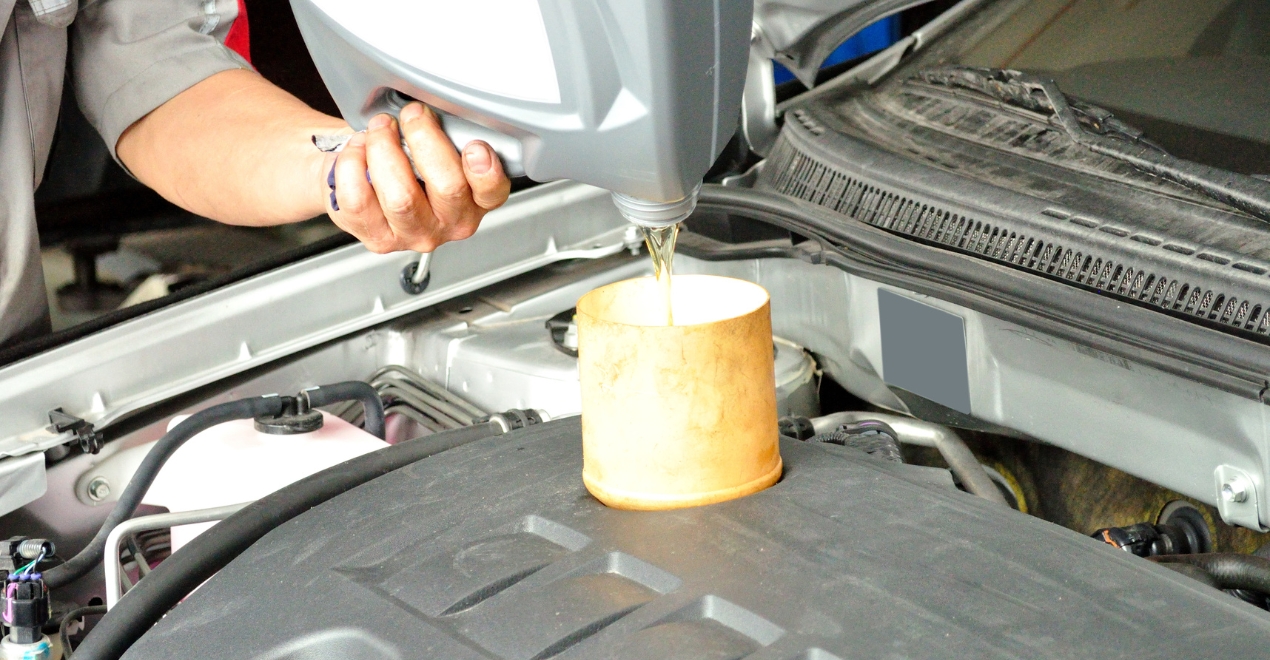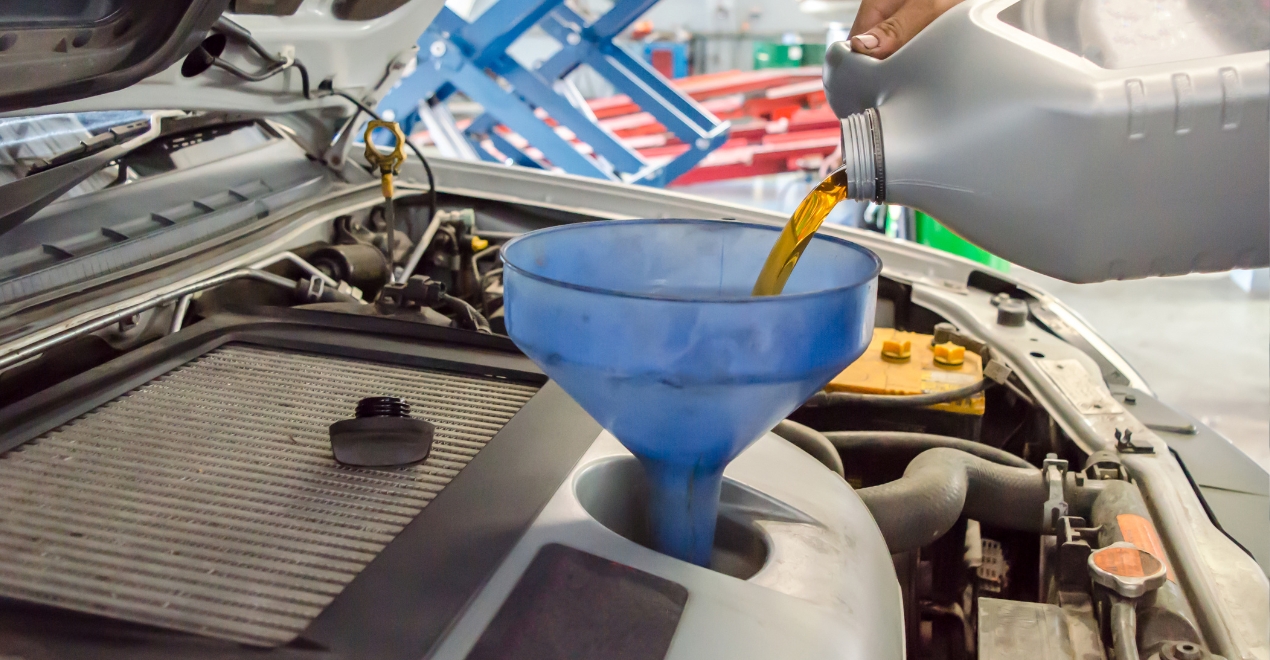Running low on engine oil can be a stressful situation for any driver. The image of a grinding engine and a hefty repair bill might flash before your eyes. The urge to top up the oil as quickly as possible is understandable. But before you reach for that oil container, consider this: adding oil to a hot engine can be risky. This guide explores the potential dangers and offers safe alternatives for topping up your engine oil. Need expert advice on engine care? Explore our tips for adding oil to a hot engine and trust Crossroads Helpline for all your car repair needs.
Understanding the Risks: Why Adding Oil to a Hot Engine Might Be Problematic

While adding oil to a hot engine won’t necessarily cause immediate catastrophic failure, there are a few potential drawbacks to consider:
- Inaccurate Oil Level Reading: Engine oil expands as it heats up. If you check the oil level shortly after turning off the engine, the dipstick reading will be higher than the actual oil level when the engine is cold. Adding oil based on this inaccurate reading can lead to overfilling, which can cause engine damage and leaks.
- Oil Spatter and Burns: Hot oil can be dangerous to handle. Adding oil to a hot engine increases the risk of spills and splatters, potentially causing burns to your skin.
- Rapid Oil Thinning: Adding cold oil to a hot engine can cause a temporary temperature fluctuation within the oil pan. While this doesn’t permanently affect the oil’s overall performance, the sudden temperature change can briefly thin the oil, reducing its lubricating properties until it reaches a uniform temperature again.
While these risks might seem minor, avoiding them altogether is advisable. Taking a few extra minutes for the engine to cool down can ensure a safe and accurate oil top-up experience.
The Safer Option: Waiting for the Engine to Cool Down
Here’s the recommended approach for safely adding oil to your car:
- Park Your Car on a Level Surface: Ensure your car is parked on a level surface to get an accurate oil level reading on the dipstick.
- Turn Off the Engine: Switch off the hot engine and allow it to cool down for at least 15-20 minutes. This allows the oil to drain back down to the oil pan, providing a more accurate reading on the dipstick. Consult your car’s owner’s manual for the recommended cool-down time specific to your vehicle.
- Locate the Oil Filler Cap and Dipstick: Identify the oil filler cap and dipstick under the hood. These are typically located near the engine block and are usually labeled for easy identification.
- Remove the Dipstick and Wipe It Clean: Pull out the dipstick and wipe it clean with a lint-free cloth.
- Reinsert and Remove the Dipstick (For Accurate Reading): Reinsert the dipstick fully, then remove it again to check the oil level. This ensures you get an accurate reading on the marked sections of the dipstick.
- Check the Oil Level: The dipstick will have markings indicating the minimum and maximum safe oil levels. If the oil level falls below the minimum mark, you can proceed to add oil.
Adding Oil Safely: A Step-by-Step Guide

Once you’ve confirmed that your engine is sufficiently cool and the oil level requires topping up, follow these steps:
- Have the Correct Oil Ready: Ensure you have the correct engine oil type and viscosity recommended for your car. Consult your owner’s manual for this information.
- Open the Oil Filler Cap: Carefully unscrew the oil filler cap. Be mindful that some residual oil might be present around the cap opening, so use a rag to prevent spills.
- Add Oil Slowly: Add oil slowly in small increments, typically around half a liter at a time.
- Check the Oil Level After Each Addition: After adding a small amount of oil, reinsert the dipstick, check the oil level, and repeat the process until the oil reaches the recommended level on the dipstick.
- Avoid Overfilling: Do not overfill the engine with oil. Exceeding the maximum safe oil level can put pressure on the engine’s seals and gaskets, potentially leading to leaks and damage.
- Replace the Dipstick and Oil Filler Cap Securely: Once you’ve reached the correct oil level, securely replace the dipstick and tighten the oil filler cap.
Additional Tips and Considerations

- Identify the Cause of Oil Loss: oil loss. A leak, worn engine components, or burning oil could be the culprit. Schedule a visit with a qualified mechanic to diagnose the problem and address it promptly.
- Carry Extra Oil: Keeping a spare container of the recommended engine oil in your car can be helpful in case you encounter a low oil situation on the road.
- Regular Oil Changes are Key: Following the manufacturer’s recommended oil change intervals is essential for maintaining optimal hot engine performance and longevity. Regular oil changes help prevent oil breakdown and ensure proper lubrication.
- Beware of Aftermarket Oil Additives: While some aftermarket oil additives claim to address oil leaks or improve engine performance, it’s generally advisable to avoid them unless specifically recommended by your car’s manufacturer. Some additives can interfere with the oil’s intended performance and potentially cause harm to your engine.
By following these precautions and safe practices, you can ensure that topping up your engine oil is a smooth and risk-free experience. Remember, prioritizing safety and taking the time for the engine to cool down before adding oil will go a long way in protecting your car and ensuring its continued smooth operation.
Conclusion
Understanding the potential risks associated with adding oil to a hot engine empowers you to make informed decisions when faced with a low oil situation. By prioritizing safety, following the recommended cool-down period, and adhering to the proper oil-adding procedures, you can ensure a safe and effective oil top-up. Remember, regular oil changes and timely maintenance are the best ways to prevent low oil levels and keep your engine running smoothly for miles to come. So, the next time your oil light comes on, don’t panic! With the knowledge gained from this guide, you can confidently address the situation and get back on the road safely.

